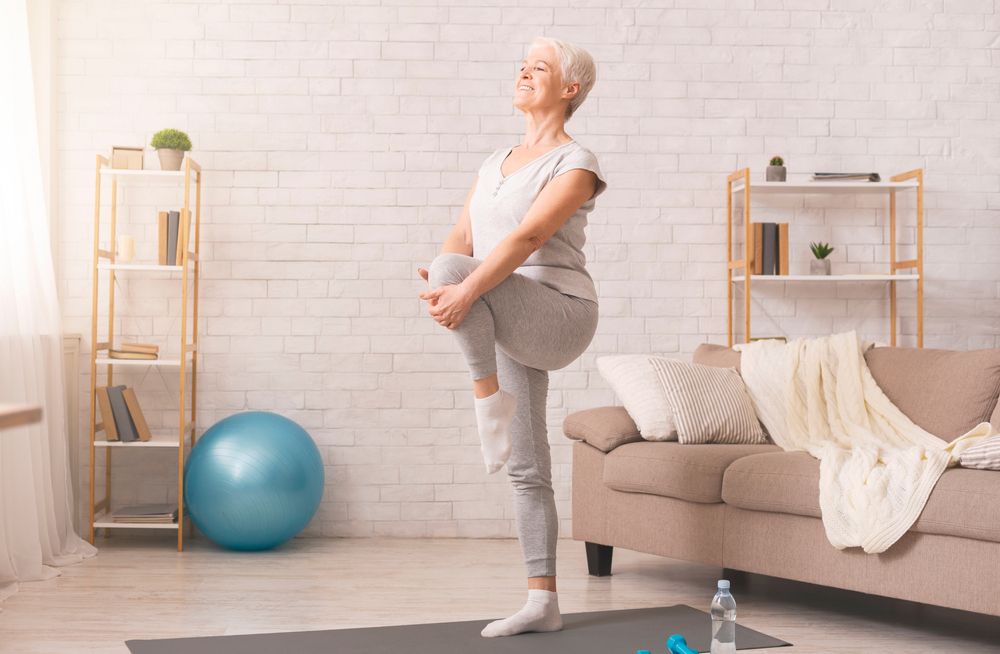As one age, prioritizing an active lifestyle becomes increasingly vital for overall health and well-being. However, it's crucial to opt for exercises that are gentle on the joints to avoid discomfort, injury, or worsening existing conditions. These joint-friendly exercises not only aid in preserving mobility but also promote strength, flexibility, and mental well-being. Whether you're a senior striving to stay fit or someone of any age aiming to safeguard joint health, incorporating these specific joint-friendly exercises into your routine can make a significant difference.
Engaging in the following exercises can help maintain mobility, prevent injuries, and enhance your overall quality of life as you age. Remember to start gradually, heed your body's signals, and seek advice from a healthcare professional before embarking on any new exercise regimen—especially if you have pre-existing health issues or concerns. With persistence and commitment, you can reap the rewards of remaining active and healthy well into the future.
Continue reading to discover the top joint-friendly exercises recommended for aging individuals.
1) Walking Lunges

The first exercise on the list of joint-friendly exercises is the walking lunge. Walking lunges are highly effective for strengthening lower-body muscles while also improving balance and stability. This exercise engages multiple muscle groups simultaneously, including the quadriceps, hamstrings, glutes, and calves.
Regularly performing walking lunges not only enhances muscle strength but also challenges coordination and proprioception, both essential for functional fitness. Additionally, since lunges require no equipment, they are accessible to individuals of all fitness levels and can be easily adjusted to meet individual needs.
To perform walking lunges, start by standing tall with feet together and hands on hips. Then, take a step forward with your right leg, lowering your body until both knees are bent at a 90-degree angle. Push off your right foot to return to the starting position and repeat the movement on the opposite side. Alternate legs for a set number of repetitions, aiming for two to three sets of walking lunges. As you progress, gradually increase the number of repetitions to build strength effectively.
2) Seated Leg Extensions
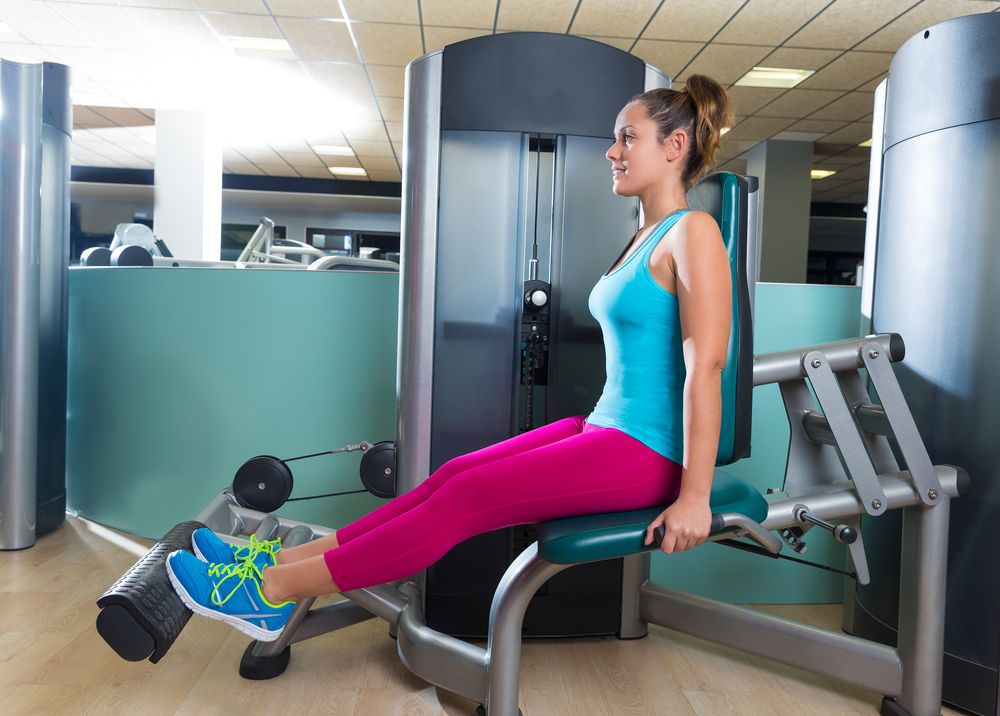
The seated leg extension is a valuable exercise for targeting the quadriceps muscles while minimizing stress on the knees. Particularly beneficial for individuals with knee concerns or those recovering from injury, this exercise isolates and strengthens the front thigh muscles. By integrating seated leg extensions into your fitness regimen, you can enhance lower-body strength, promote knee stability, and support overall joint health.
To perform seated leg extensions, start by sitting upright on a chair with feet flat on the floor. Extend one leg straight out in front of you, maintaining a slight bend in the knee. Hold this position briefly, then lower the leg back down. Repeat the movement with the opposite leg. Aim for two to three sets of 10 to 12 repetitions per leg to maximize the benefits of this exercise.
3) Water Walking

Water walking is a revitalizing and joint-friendly exercise that offers resistance to strengthen muscles and enhance cardiovascular health. This low-impact activity is particularly suitable for individuals dealing with arthritis, joint discomfort, or mobility constraints, as the buoyancy of water alleviates stress on the joints while still delivering an effective workout. Moreover, water walking can be adapted to both shallow and deep water, providing flexibility and customization to accommodate diverse fitness levels and preferences.
To perform water walking, stand in waist-deep water with arms relaxed by your sides. Begin walking forward, concentrating on engaging your core and rhythmically moving your arms. Maintain a brisk pace for approximately 10 to 15 minutes. Gradually increase the duration or intensity of your water walking sessions as your fitness level progresses.
4) Chair Yoga Seated Twists
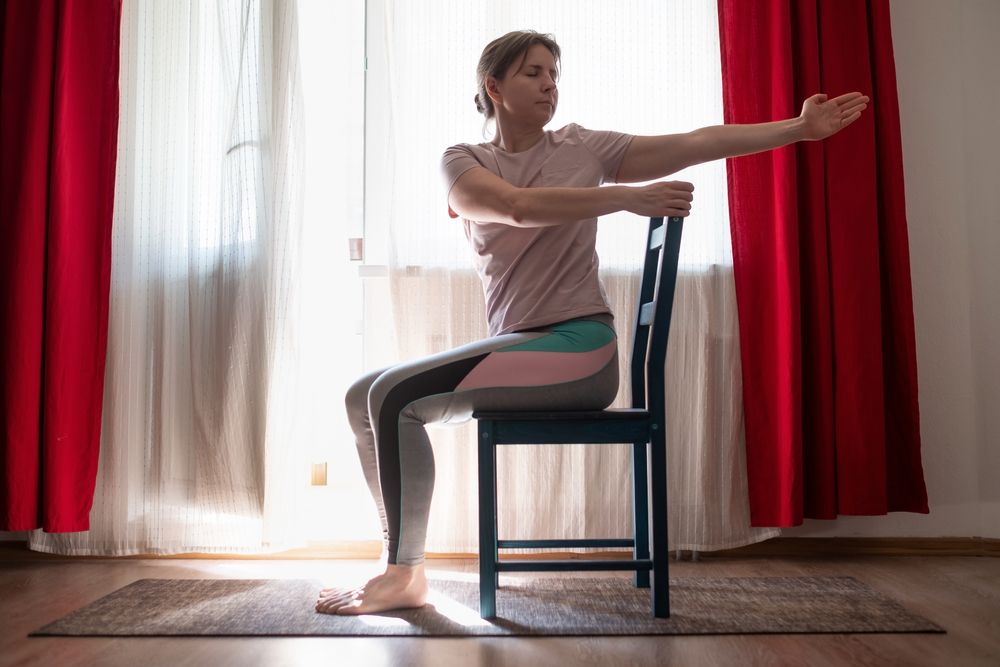
Chair yoga seated twists offer a gentle yet impactful method to enhance spinal mobility and alleviate back stiffness. This exercise aids in releasing tension in the spine, shoulders, and neck while fostering relaxation and stress reduction. By integrating seated twists into your daily regimen, you can elevate flexibility, alleviate discomfort, and bolster overall spinal health.
To perform chair yoga seated twists, begin by sitting tall in a chair with feet flat on the floor and hands resting on knees. Inhale deeply as you elongate your spine, then exhale and gently twist to the right, placing your left hand on the outside of your right knee and your right hand on the back of the chair for support. Hold this twist for a few breaths, then return to the center and repeat on the opposite side. Aim for two to three sets of five to eight repetitions per side, gradually increasing as your body allows.
5) Resistance Band Leg Press
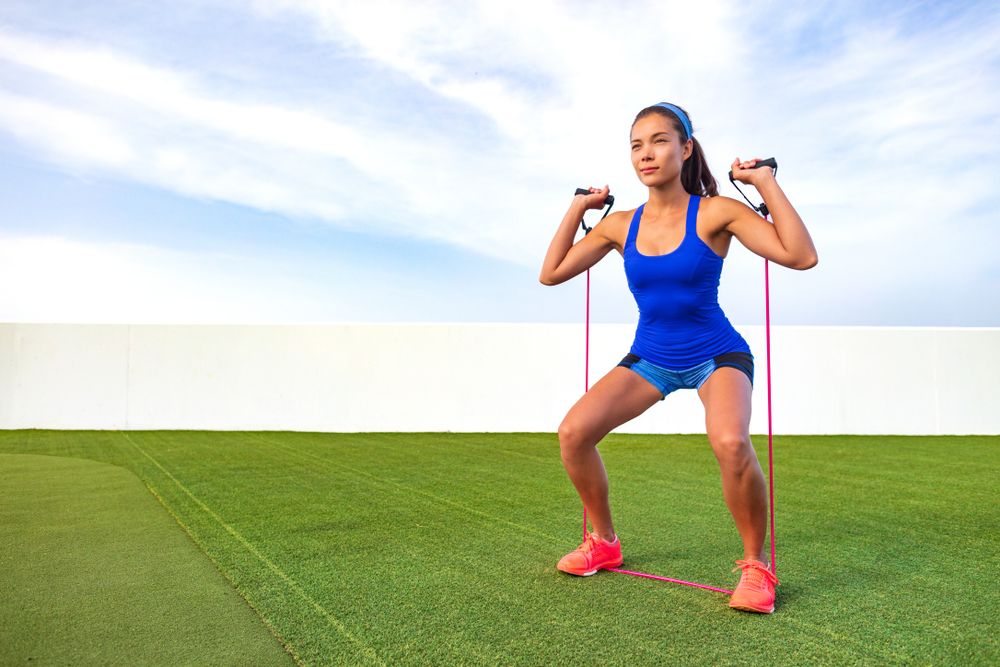
The resistance band leg press is a versatile exercise designed to target the lower body muscles while offering joint-friendly resistance. This exercise replicates the movement of a traditional leg press machine but can be performed anywhere using a resistance band, making it suitable for home workouts or while traveling. By adding resistance band leg presses to your fitness regimen, you can enhance lower-body strength, tone muscles, and promote joint stability.
To perform the resistance band leg press, start by sitting upright on a chair with a resistance band looped around one foot and anchored behind you. Extend the leg forward, pressing against the resistance provided by the band. Slowly bend the knee to return to the starting position. Aim for two to three sets of 10 to 12 repetitions per leg, gradually increasing the resistance of the band as your strength improves.
6) Wall Pushups
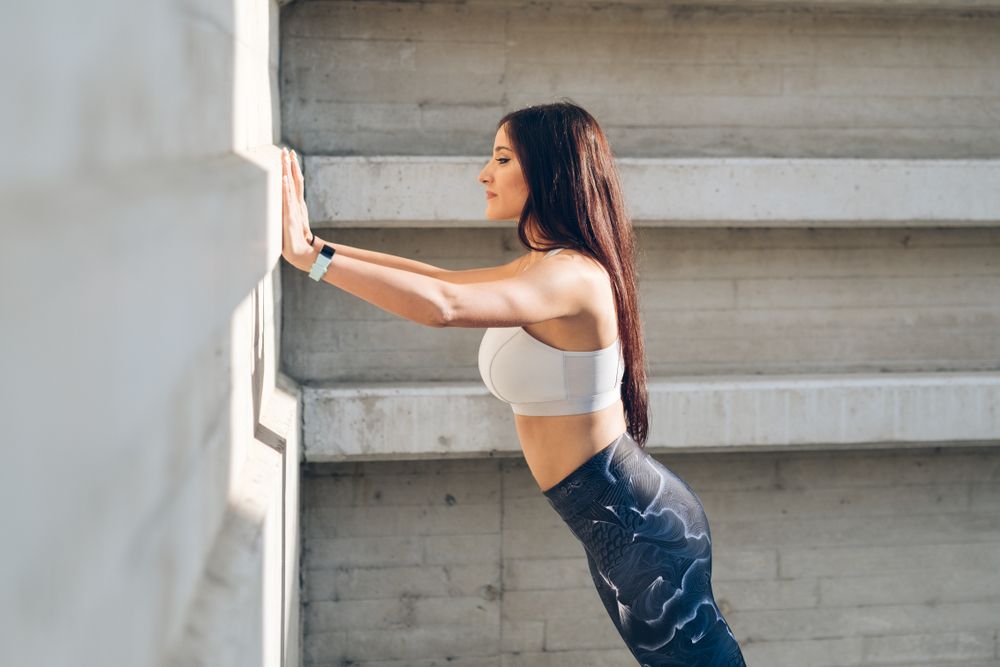
Wall pushups are a modified variation of traditional pushups, offering an effective upper-body workout while being gentle on the joints. This exercise primarily targets the chest, shoulders, and triceps, aiding in strength and endurance development without the need for equipment. Wall pushups can be easily tailored to accommodate various fitness levels, making them suitable for both beginners and seasoned exercisers.
To perform wall pushups, stand facing a wall with arms extended at shoulder height and palms flat against the wall. Lean forward and bend your elbows to lower your chest toward the wall, maintaining a straight line from head to heels. Push back to the starting position, engaging your upper body muscles throughout the movement. Aim for two to three sets of eight to 12 repetitions, adjusting the distance from the wall to alter the level of resistance as needed.
7) Standing Calf Raises

The standing calf raise is another beneficial exercise in our collection of joint-friendly workouts. It effectively strengthens the calf muscles and enhances ankle stability. This exercise primarily targets the lower leg muscles, including the gastrocnemius and soleus, crucial for maintaining balance and mobility. Integrating standing calf raises into your fitness routine can help decrease the risk of ankle injuries, boost lower-body strength, and promote overall joint health.
To perform standing calf raises, begin by standing tall with your feet hip-width apart. Place your hands on a stable surface for support and balance. Rise onto the balls of your feet, lifting your heels as high as possible. Hold this position momentarily, then gently lower your heels back down to the ground. Aim for two to three sets of 12 to 15 repetitions, gradually increasing the intensity as your strength improves.
8) Supine Leg Lifts

Supine leg lifts offer a straightforward yet impactful way to engage the lower abdominal and hip muscles. This exercise is instrumental in enhancing core strength, stability, and balance while minimizing the risk of lower back discomfort. The beauty of supine leg lifts lies in their versatility—they can be performed virtually anywhere, making them an accessible addition to your daily regimen.
To execute supine leg lifts, start by lying on your back with your legs fully extended and arms resting by your sides. Lift one leg upward toward the ceiling, ensuring to keep the knee straight without locking it. Lower the leg back down under control. Repeat the movement with the opposite leg. Strive for two to three sets of 10 to 12 repetitions per leg, emphasizing deliberate and controlled motions to effectively engage the targeted muscles.
9) Bicep Curls with Light Weights
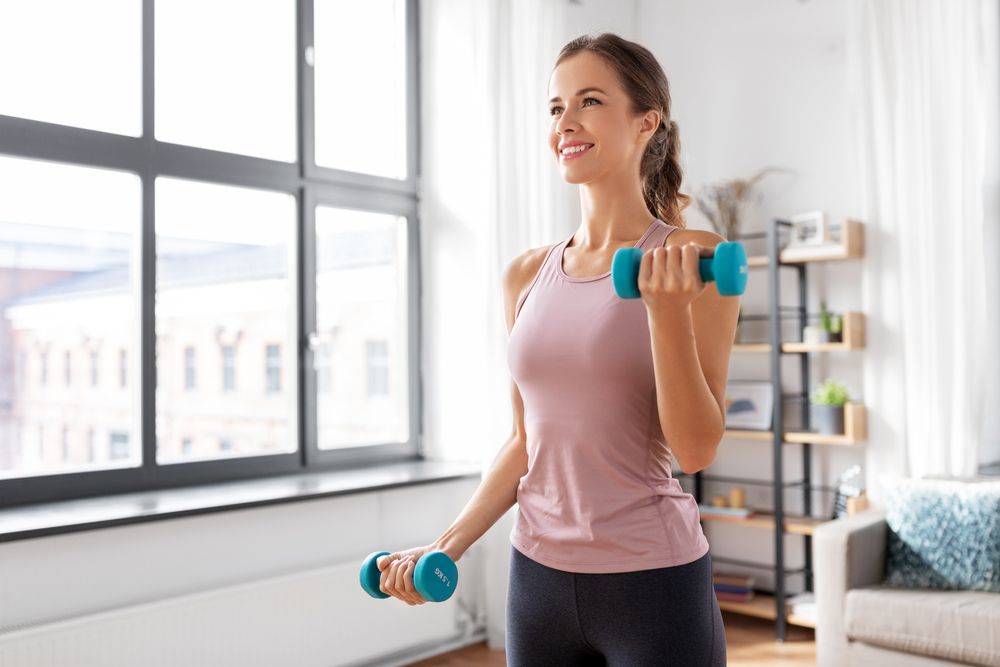
Performing bicep curls with light weights offers a straightforward yet effective method to strengthen arm muscles while minimizing joint strain. This exercise primarily targets the biceps brachii, enhancing arm strength and functionality. Integrating bicep curls into your routine can improve your capacity for everyday activities requiring arm strength, such as lifting groceries or carrying objects.
To execute bicep curls, stand upright with your feet shoulder-width apart, holding a light dumbbell in each hand with palms facing forward. Bend your elbows, raising the weights toward your shoulders while keeping your upper arms stationary. Lower the dumbbells gradually with controlled movements. Aim for two to three sets of 10 to 12 repetitions, emphasizing slow and deliberate motions throughout the exercise.
10) Standing Hip Abduction
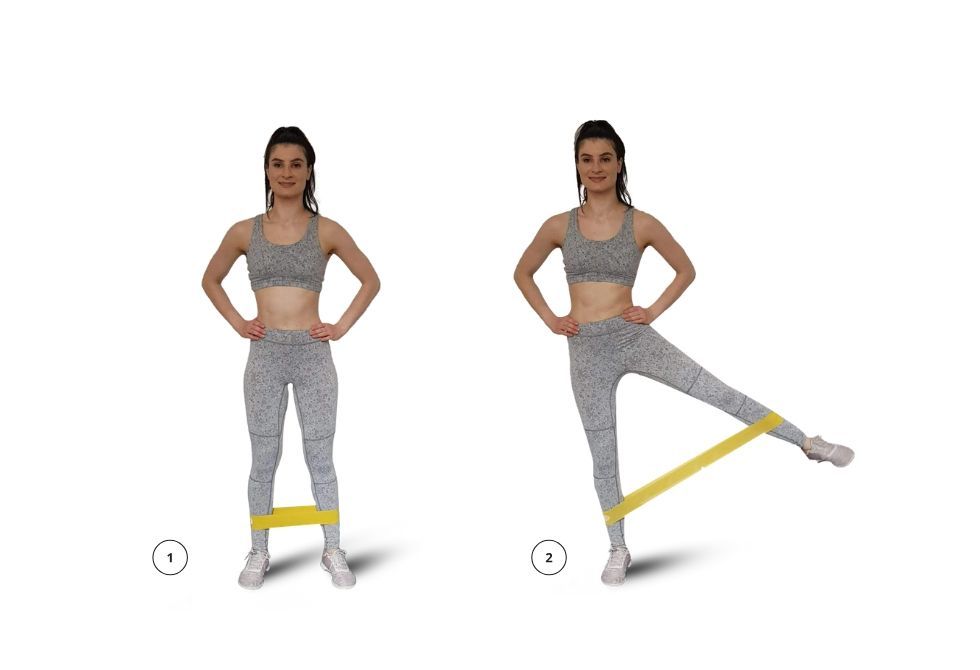
The final exercise on our list of joint-friendly movements is the standing hip abduction. This exercise targets the muscles of the outer thighs and hips, promoting hip stability and balance. It's particularly beneficial for strengthening the muscles surrounding the hip joint, reducing the risk of injury, and enhancing overall lower-body strength. By adding standing hip abductions to your routine, you can improve your capacity for everyday activities involving lateral movement, such as walking or stair climbing.
Here's how to perform standing hip abductions: Stand tall with your feet hip-width apart, using a stable surface for balance if needed. Lift one leg out to the side, keeping the knee straight but not locked. Hold the position briefly, then lower the leg back down. Repeat the movement with the opposite leg. Aim for two to three sets of 10 to 12 repetitions per leg, gradually increasing the intensity as your strength improves.

